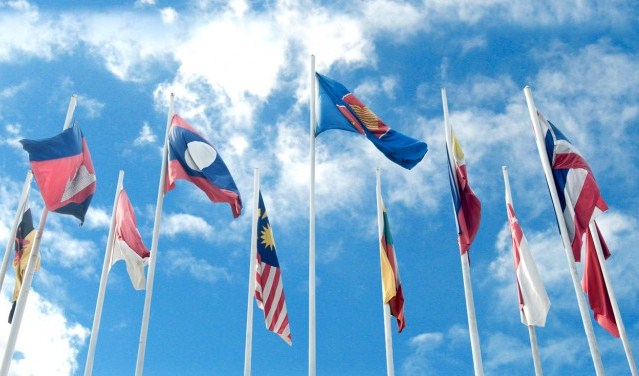Leaders of the Association of Southeast Asian Nations (ASEAN) member states have agreed to adopt a self-developed regional strategy for closer cooperation and enhanced community building in the Indo-Pacific region amidst elevated global trade tensions.
In a statement the ASEAN leaders said they have approved the “ASEAN Outlook on the Indo-Pacific,” a document that “intends to enhance ASEAN’s Community building process and to strengthen and give new momentum for existing ASEAN-led mechanisms to better face challenges and seize opportunities arising from the current and future regional and global environments.”
Moreover, the outlook is intended to be inclusive in terms of ideas and proposals, the statement said.
The statement noted how the Asia-Pacific and Indian Ocean regions have been among the most dynamic in the world as well as centers of economic growth for decades. However, these regions also continue to experience “geopolitical and geostrategic shifts” that present opportunities as well as challenges.
“On the one hand, the economic growth of the region opens up possibilities of cooperation to alleviate poverty and elevate living standards of millions of people. On the other hand, the rise of material powers, i.e. economic and military, requires avoiding the deepening of mistrust, miscalculation, and patterns of behavior based on a zero-sum game,” it said.
“Therefore, it is in the interest of ASEAN to lead the shaping of their economic and security architecture and ensure that such dynamics will continue to bring about peace, security, stability and prosperity for the peoples in the Southeast Asia as well as in the wider Asia-Pacific and Indian Ocean regions or the Indo-Pacific,” it continued.
It said ASEAN needs to consistently come up with its collective leadership in forging and shaping the vision for closer cooperation in the Indo-Pacific and to continue to maintain its central role in the evolving regional architecture in Southeast Asia and its surrounding regions. ASEAN also needs to continue being an honest broker within the strategic environment of competing interests.
Through the outlook, ASEAN leaders have agreed to further discuss an initiative that reinforces this ASEAN-centered regional architecture.
The outlook envisages ASEAN centrality as the underlying principle for promoting cooperation in the Indo-Pacific region, with ASEAN-led mechanisms, such as the East Asia Summit (EAS), as platforms for dialogue and implementation of the Indo-Pacific cooperation, while preserving their formats.
Furthermore, ASEAN may also seek to develop cooperation with other regional and sub-regional mechanisms in the Asia-Pacific and Indian Ocean regions on specific areas of common interests to complement the relevant initiatives.
The outlook on the Indo–Pacific consists of a number of key elements. These are a perspective of viewing the Asia-Pacific and Indian Ocean regions not as contiguous territorial spaces but as a closely integrated and interconnected region, with ASEAN playing a central and strategic role; an Indo-Pacific region of dialogue and cooperation instead of rivalry; an Indo-Pacific region of development and prosperity for all; and the importance of the maritime domain and perspective in the evolving regional architecture.
The ASEAN Outlook on the Indo–Pacific is aimed at offering an outlook to guide cooperation in the region; helping to promote an enabling environment for peace, stability and prosperity in the region in addressing common challenges, upholding the rules-based regional architecture, and promoting closer economic cooperation, and thus strengthen confidence and trust. It also aims to enhance ASEAN’s community-building process and further strengthen the existing ASEAN-led mechanisms, such as the EAS; and implement existing and exploring other ASEAN priority areas of cooperation, including maritime cooperation, connectivity, the Sustainable Development Goals (SDGs), and economic and other possible areas of cooperation.
A first reading of the negotiating draft is expected to be ready by the end of this year.
The Indo-Pacific is a biogeographic region of Earth’s seas, comprising the tropical waters of the Indian Ocean, the western and central Pacific Ocean, and the seas connecting the two in the general area of Indonesia.
Photo courtesy of ASEAN









